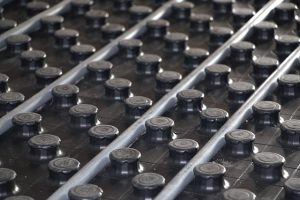When thinking of ways on how to optimize an art gallery space, keep in mind that just like museums, galleries must maintain pleasing and special conditions.  Special because the goal is to create a comfortable surrounding with the right energy balance and cost efficiency. The key purpose is to institute the most effective and energy-efficient preservatiion consenservation systems.
Special because the goal is to create a comfortable surrounding with the right energy balance and cost efficiency. The key purpose is to institute the most effective and energy-efficient preservatiion consenservation systems.
Here, it’s not just the gallery visitors who should experience ease and comfort while viewing and mingling with other art lovers. It’s important that every piece of artwork on display or in storage is in the best condition to keep all art materials and elements well preserved.  Preservation conservation is the fourth aspect of the art conservation concept; the other three being, Examination, Documentation and Treatment.
Preservation conservation is the fourth aspect of the art conservation concept; the other three being, Examination, Documentation and Treatment.
In preservation conservation, museums and art galleries make it a point to create spaces and surroundings using the right equipment in heating, air conditioning, ventilating and cleaning the environment. Administrators of museums and art galleries recognize the fact that certain climate and atmospheric factors can damage culturally and historically valuable objects. It’s important therefore that the related upkeep and maintenance equipment and practices are in place, and must include various methods of addressing the most damaging agents of destruction.
Aside from theft and vandalism, the Canadian Conservation Institute (CCI), specified eight other agents of artwork destruction, namely random physical forces, fire, water, light, pests, incorrect humidity level, inappropriate temperature levels and dissociation or separation from cultural origins.
How Can Installations Affect Preservation Conservation in Museums and Art Galleries
In places specifically built to collect, put on display and store artworks and regardless of current cultural and historical importance, certain physical and natural elements not occurring in the right balance or proper level, can act as agents of destruction.
High temperature, which could sometimes occur as a result of an artwork’s proximity to a heat-generating machine like a radiator, heightens risks of creating damage to delicate or heat-sensitive objects.
Generally, heat production reduces humidity, which can affect artistic objects made from paper, wood or canvas. As a result, the condition makes the objects more flammable.
Another reason why high temperatures are not ideal for art is the tendency of materials to warp. While these art pieces can be kept in protective casings, certain elements such as plastics, glazes and glasses cannot withstand long term high temperature and high humidity to carry on ordinary preservative conservation measures.
Certain art conservation materials such as videos, compact discs and cellulose-based materials are known to be unstable. Unstable composition and conditions can cause melting, yellowing or warping, since they are highly sensitive to erratic heat and humidity levels.
Importance of Underfloor Heating Systems
 In The Netherlands, one of the most important aspects of preservative conservation is the installation of the right underfloor heating system. Today, this is important since the Dutch government has made it mandatory for building and home owners to replace radiators and boilers running on coal fuel or electricity.
In The Netherlands, one of the most important aspects of preservative conservation is the installation of the right underfloor heating system. Today, this is important since the Dutch government has made it mandatory for building and home owners to replace radiators and boilers running on coal fuel or electricity.
If your planned art gallery will be housed in a building with underfloor heating supported by a hybrid fuel pump, you aren’t likely to encounter preservation conservation issues concerning high room temperatures. Here, the underfloor heating is provided by a heat pump and a gas boiler that produces the hot water supply of the building. It’s a hybrid system if it has the capability to draw warm air from external surroundings. It’s an option made available by the heat pump’s smart thermostat, which monitors and controls the temperature levels.
Now if your art gallery is a stand-alone establishment and not part of a building, the best types of underfloor heating installations are the warp systems. This technology is also known as the dry type.
Its installation merely entails placing several layers of floor heating and insulation materials. One of the layers contains the network of cables hooked up to a smart and energy-efficient heat pump.
